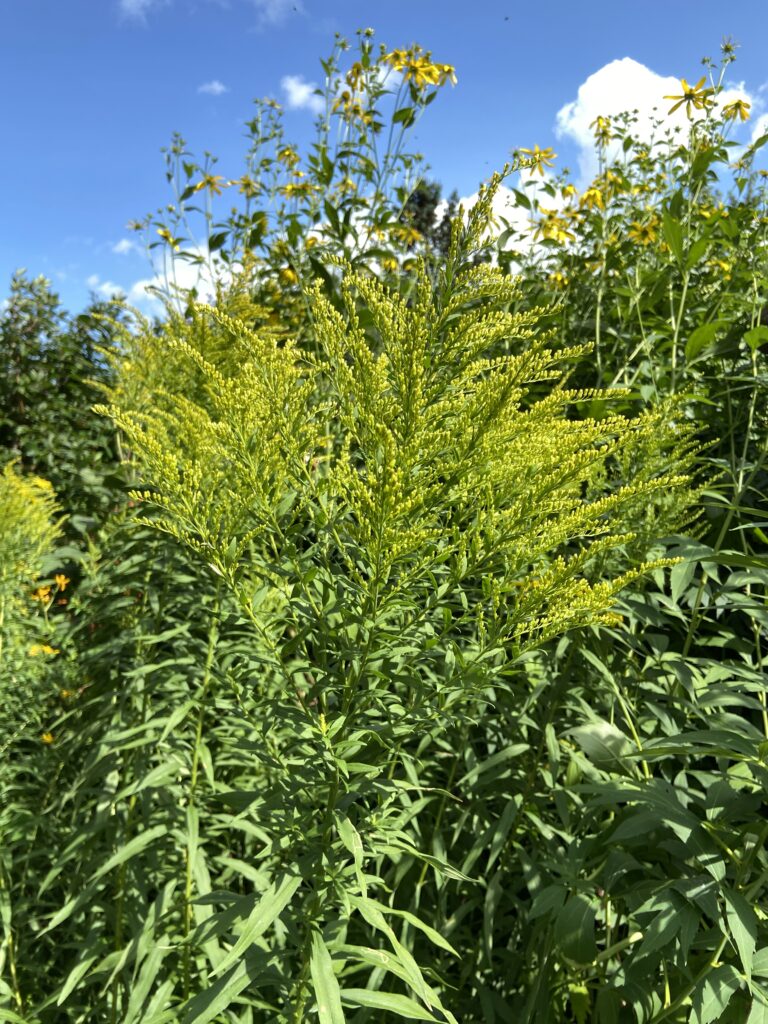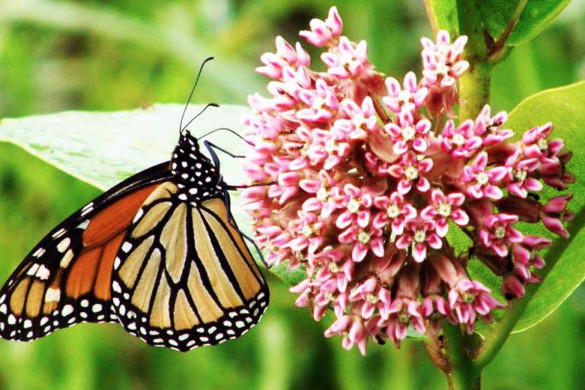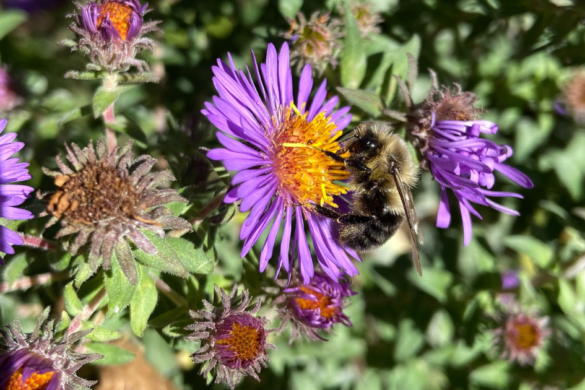Goldenrod season is here: their cheerful, sunny blooms lighting up pollinator gardens, roadsides, meadows and anywhere they can gain a foothold.
And thank goodness for their tenacity, and for the gifts they bring year after year.
Goldenrods are important keystone plants – they support an incredible number of bees, birds, butterflies, moths and other beneficial insects and small animals.
Zigzag goldenrod for the woodland garden
One of my favourite goldenrods – zigzag goldenrod (Solidago flexicaulis) – is coming into its own right now, tight buds opening to become little star-like flowers along the length of its stems.
Zigzag goldenrod is a woodland species: in our garden it blooms in the dappled shade of a honey locust tree.
Over the next several weeks the leaves will turn a brilliant red, and its soft, tan-coloured seed heads will feed goldfinches and other small birds.
Prolific spreaders, but reasonably easy to control
We also have stiff goldenrod (Solidago rigida) and Canada goldenrod (Solidago canadensis) in our garden, also just starting to bloom.
Stiff goldenrod is a stately plant with flat-topped clusters of blooms that attract a remarkable number of bees, spiders, beetles and other insects. It’s taller than its zigzag cousin, and prefers more sun.
All goldenrods are prolific spreaders, but you can keep them contained by pulling them out as they stray.
For me, that’s easier said than done, however. Whenever I debate scaling them back I think about the wild creatures they attract and support right into the winter months.


An outsized contribution to the web of life
In his book, Nature’s Best Hope, Doug Tallamy describes the many ways goldenrod species contribute to the web of life:
They are host plants for 181 species of important caterpillars that in turn feed birds.
They are a source of nectar, pollen and habitat for both specialist and generalist native bees. (Some species of bees rear their larvae exclusively on goldenrod pollen. Bees also excavate goldenrod stems for use as nesting sites.)
Their nectar fuels monarch butterflies on their long migration.
And even below ground, their roots help rainwater infiltrate the soil and prevent erosion.
“The genus Solidago, which includes 100 described species in North America, is without a doubt one of nature’s greatest gifts to animal life.”
— Doug Tallamy, Nature’s Best Hope
As a side note, goldenrod isn’t to blame for allergies – if you are suffering, the culprit in this season is most likely ragweed.
Next week, I’ll be writing about asters, another important group of late summer/fall wildflowers.
Thanks for reading. Enjoy your day,
— Stacey
P.S. See a bee enjoying the zigzag goldenrod in our garden on Milkweed Journal’s Instagram.











